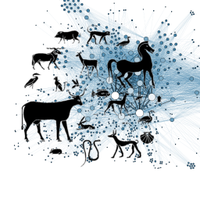Comparative risk-assessment of highly pathogenic avian influenza H5 viruses spread in French broiler and layer sectors
This article has been Reviewed by the following groups
Discuss this preprint
Start a discussion What are Sciety discussions?Listed in
- Evaluated articles (Peer Community in Animal Science)
Abstract
Since 2015, French poultry production is threatened almost every year by a reintroduction of highly pathogenic avian influenza H5 viruses. The duck sector was the most concerned by this crisis but other sectors such as broiler, layer and turkey were also affected by outbreaks. The objective of this work was to assess the risk of highly pathogenic avian influenza H5 virus transmission from one farm to another within the French broiler and layer production network.
This study used the WOAH risk assessment framework. After drawing up a scenario tree of virus transmission from one farm to another, data were collected through a literature review or through experts’ elicitation. Three questionnaires were developed according to the experts’ field of expertise: avian influenza, broiler and layer sectors. The experts’ estimates were combined using a beta distribution weighted by their confidence level. A Monte Carlo iteration process was used to combine the different probabilities of the scenario tree and to assess the transmission risk.
In the broiler sector, the highest transmission probabilities were observed if the exposed farm was an indoor broiler farm and the source a broiler farm (indoor or free-range). The high transmission probability between broiler farms integrated within the same association suggests that integration is an important risk factor. Person movement, transport of feed and manure management were the pathways with the highest transmission probabilities between two integrated indoor broiler farms with good biosecurity levels. In the layer sector, the highest transmission probabilities were observed if the source farm was a free-range farm and the exposed farm a production farm (indoor or free-range). The pathways with the highest transmission probabilities were egg transport and person movement. The sensitivity analysis showed that the exposed farm’s biosecurity had a significant impact on the transmission probability.
Our results provide an insight on the role of each type of farms in the virus spread within the French broiler and layer production sectors and will be useful for the implementation of control measures such as movement restriction or vaccination.


